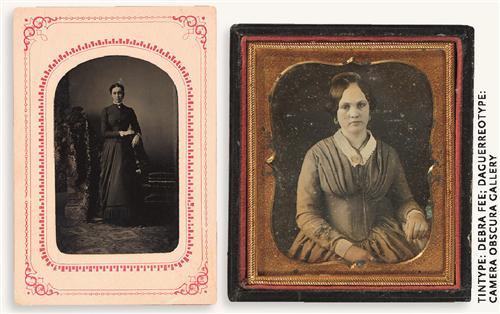Sign up for the Family Tree Newsletter Plus, you’ll receive our 10 Essential Genealogy Research Forms PDF as a special thank you!
Get Your Free Genealogy Forms
"*" indicates required fields

A. “Cased” images such as tintypes (shown in the peach frame) and daguerreotypes (matted in brass) arc some of the earliest forms of photography. Tintypes date from 1856 to the early 20th century, while daguerreotypes go back as far as 1840 and remained popular for the next 20 years or so. Both processes involved printing the images on metal.
Your scrapbook isn’t the best place for these one-of-a-kind photos. Instead, make copies to use in the album, then safely store the originals. David Mishkin, president of Just Black & White, a Portland, Maine, photo-restoration lab, recommends placing tintypes and daguerreotypes in envelopes made from acid-free, lignin-free paper; polyethylene; or Mylar. They’re available from archival suppliers.
ADVERTISEMENT

